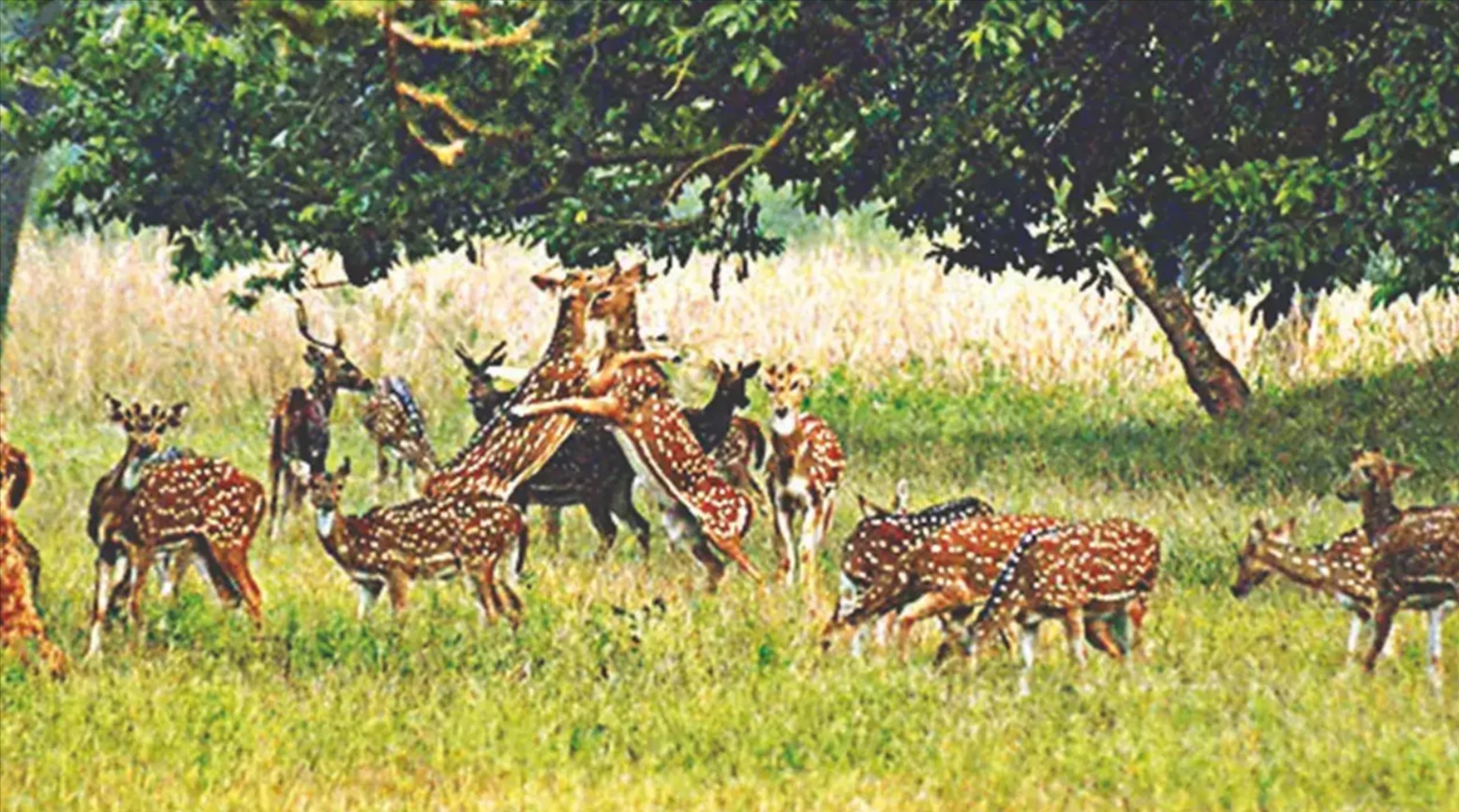
Jaigir village relocation is a key initiative that aims to reduce wild animal conflicts while protecting endangered species living inside Palamu Tiger Reserve. The authorities continue to protect the reserve by concentrating their efforts on defending both the tigers and other critical species, besides maintaining the distinctive ecosystem. By this initiative, it will help to protect both the biodiversity and historical status as the first Project Tiger project in India.
Context:
-
Palamu Tiger Reserve (PTR) in Jharkhand accomplished substantial progress when Jaigir village became the first complete village to relocate out of its core area.
-
The relocation of Jaigir village serves two main purposes:
-
To limit human activity and
-
To enable stronger wildlife conservation activities
-
Key Points about Palamu Tiger Reserve:
-
The Palamu Tiger Reserve spreads across 93 sq km territory in the Jharkhand region that belongs to Latehar district.
-
Palamu Tiger Reserve stands among the original nine Project Tiger projects that started in 1974 while serving as Jharkhand's exclusive protected area.
-
The Betla National Park and its parts form part of the PTR and maintain a notable diversity of species.
-
The five essential keystone species of the reserve consist of the tiger, together with the Asiatic elephant, leopard, and sloth bear, with the grey wolf included.
-
Northern tropical dry deciduous forests prevail in the reserve territory, and Sal trees stand as its most abundant plants.
-
Three primary rivers, namely North Koel, together with Burha and Auranga, conduct water drainage in the region, while geology reveals gneiss, quartzite, amphibolite, and laterite rocks.
-
J.W. Nicholson performed the historical tiger pugmark-based census, which took place in 1932.
Jaigir Village Relocation: Key Points
-
First Village Relocated:
-
Jaigir Village represents the initial complete village relocation project from the core zone area of the Palamu Tiger Reserve that exists within Jharkhand.
-
-
Aim of Relocation:
-
The relocation project moves settlements outside critical wildlife areas because it seeks to decrease human-wildlife conflicts.
-
The relocation project intends to improve wildlife conservation through creating safer environments for tigers along with other protected species inside the core zone.
-
-
Significance of the Relocation:
-
The habitat of critical importance to tigers becomes more accessible after clearing human settlements from these areas so wildlife can live interference-free.
-
The relocation of Aigir Village functions as a guide for different Indian tiger reserves to show how human settlements can be effectively shifted toward wildlife preservation goals.
-
The relocation strengthens the role of Palamu Tiger Reserve in Project Tiger through improved protection of tiger conservation areas.
-
-
Broader Impact:
-
By relocating Aigir Village the wider conservation efforts will be supported while PTR aims to increase tiger numbers and maintain biodiversity levels at the reserve.
-
About Tiger Reserve:
-
According to historical records India contained 40,000 tigers at the beginning of 1900.
-
A decline in the number of remaining tigers occurred between 1973 and 1972 when scientists counted only 1,800 of these animals in the entire country.
-
-
The government initiated Project Tiger through its establishment of 9 tiger reserves in 1973 for tiger conservation purposes.
-
The current situation shows that Project Tiger works with 54 tiger reserves distributed over 18 Indian states which make up the tiger range areas.
-
Tiger reserves and core-buffer model:
-
Core Areas function as legally protected natural spaces which include national parks and sanctuaries that bar all human activities particularly grazing and minor forest resource collection to maintain wildlife peace.
-
Buffer Zones establish a protected area that incorporates forested areas together with allocated non-forest zones where regulated human activities assist local communities in their survival while protecting tiger populations.
-
Conclusion
Moving the Jaigir village represents an essential initiative to boost wildlife defense measures in the Palamu Tiger Reserve. The reduction of human presence within the reserve will lead to improved conservation results for animals and plants, particularly affecting the primary species known as the tiger. The initiative strengthens both human well-being and wildlife protection through its role as a breakthrough hub for biodiversity conservation under Project Tiger.



 Indian-Made Chemotherapy Drugs Fail Quality Tests Globally
Indian-Made Chemotherapy Drugs Fail Quality Tests Globally Government to Launch ‘NAVYA’ Pilot Initiative for Skilling Adolescent Girls Under Viksit Bharat@2047
Government to Launch ‘NAVYA’ Pilot Initiative for Skilling Adolescent Girls Under Viksit Bharat@2047 AviList: The First-Ever Unified Global Bird Species Checklist Launched
AviList: The First-Ever Unified Global Bird Species Checklist Launched New Jumping Spider Species Discovered in Southern India
New Jumping Spider Species Discovered in Southern India World Environment Day 2025: “Beat Plastic Pollution”
World Environment Day 2025: “Beat Plastic Pollution” PM Modi to Launch Aravali Green Wall Project 2025
PM Modi to Launch Aravali Green Wall Project 2025 UN Warns 70% Chance of Breaching 1.5°C Global Warming by 2029
UN Warns 70% Chance of Breaching 1.5°C Global Warming by 2029 International Day for Biological Diversity 2025: Role of Rural India in Biodiversity Conservation
International Day for Biological Diversity 2025: Role of Rural India in Biodiversity Conservation Asiatic Lions Roar Louder in Gujarat; Population Rises to 891
Asiatic Lions Roar Louder in Gujarat; Population Rises to 891 Kerala’s ‘Vruthi’ Campaign: A Decentralised and Participatory Approach to Waste Management
Kerala’s ‘Vruthi’ Campaign: A Decentralised and Participatory Approach to Waste Management






